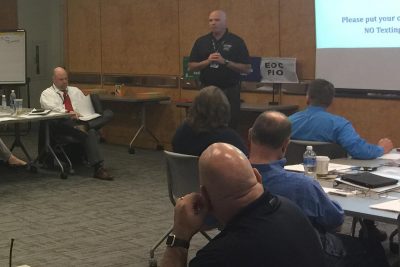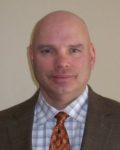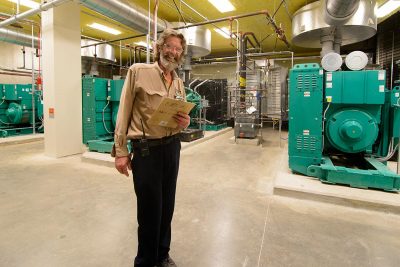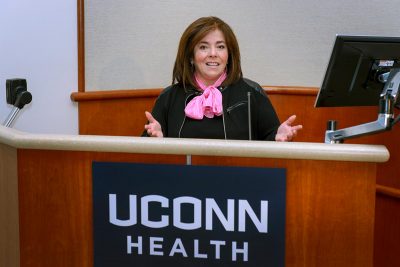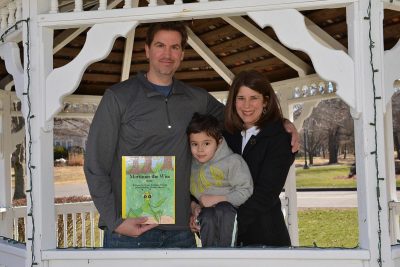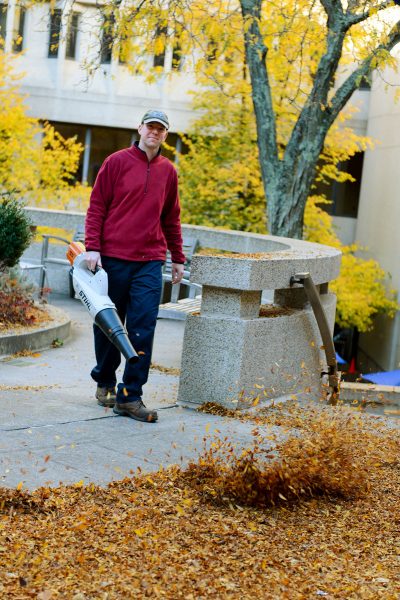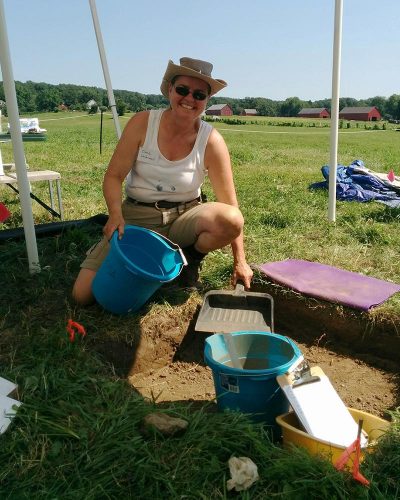
Carol Underwood spent a week this summer on an official dig with state archaeologist Brian Jones. Carol lives in Bloomfield and has been with UConn Health for five years. When she’s not unearthing artifacts, she’s working in the Information Technology Department as an application architect and Oracle database administrator. The official dig she participated in was at a large buried farm complex in Glastonbury associated with Lt. John Hollister of Glastonbury that dates back to the mid-17th century.
What did you find?
Artifacts like rusty iron nails, bits of brick, glass, bone, teeth, fish scales, charcoal, chert, flint, clay pipe stems and bowls, pottery both glazed and earthenware, snails. I was not lucky enough to find the native beads and points that were unearthed. I exposed a “feature” which was a large stain in the dirt 30 centimeters down that indicated a support post for the house had been there.
What is the significance?
This is arguably the most important historic period archaeological site to be identified in the state of Connecticut. The site documents an especially poorly understood period of colonial history as the first English settlers of the Connecticut River Valley adjusted to a new way of life.
How did you become interested and get involved?
I always liked dirt, digging, history and databases. All are good qualities to have in an archaeologist. Decades ago I wrote to then state archaeologist Nicholas Bellantoni about his work on vampires in New England. He wrote me back and invited me to come on a dig, so I had been thinking about this for a long time.
Carol Underwood
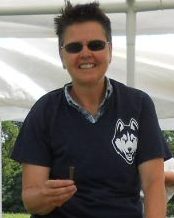 Favorite musician:
Favorite musician:
Dixie Chicks/Natalie Maines
Favorite place to visit:
Acadia National Park (Seawall, Thunder Hole)
Person you’d like to meet:
Former Alabama Gov. George C. Wallace. During his final years, he publicly recanted his racist views and asked for forgiveness from African Americans. I would like to talk to him about that process.
Favorite sports team
UConn women’s basketball
What was a typical day like?
Each day was a day of hard labor surrounded by beautiful farms and horses. I would arrive at the Park & Ride at 8:45 a.m. and meet up with other crew members. We would carpool to the farm, then stroll through the horse pasture down to the dig site. We erected a tent city to protect us from the sun. We would start right in digging our area that was carefully marked out. Precise levels of dirt were removed and each bucket sifted. Artifacts found were placed into plastic bags marking site, quadrant, quad, level and my initials. It was dig – sift, dig – sift cycle all day long till 3 p.m. If someone found a cool artifact we would do show and tell. I went home tired, dirty and exhilarated.
What surprised you on this dig?
Ground-penetrating radar (GPR) technology was used to find the original farmstead. The radar also showed three wigwams, which may be the first archaeological evidence of cohabitation between early colonists and Native Americans.
Also, one day, to my surprise, the now-retired Dr. Nicholas Bellantoni showed up. I told him about the letters we wrote to each other many years ago then said, “I’m here!” I got to work with Dr. Bellantoni and he was finding all the good stuff like native beads.
Learn more about the Connecticut Archaeology Center at www.cac.uconn.edu/osa.html.
